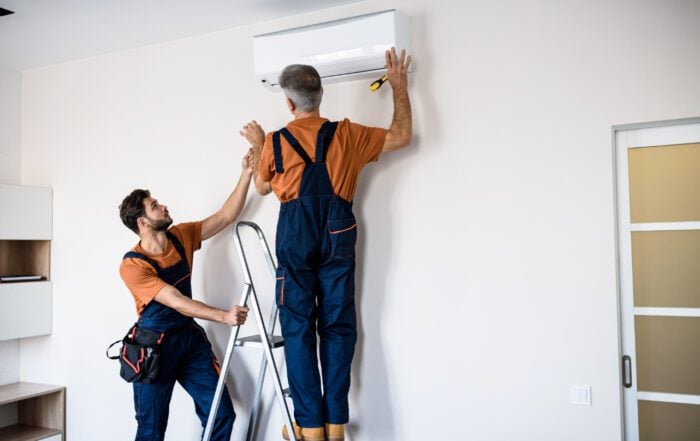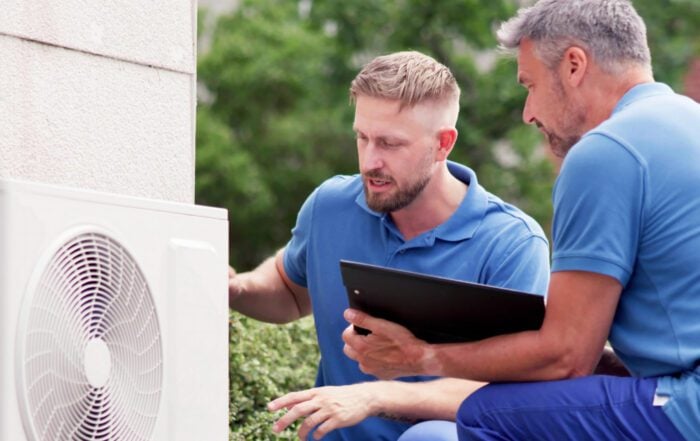Spring is here.
And with it comes sneezing, itchy eyes, and runny noses for allergy sufferers. So how can you reduce the number of allergens in your indoor air?
While the best way to remove pollutants from a house is to increase ventilation and bring in more fresh air, that won’t work for people with spring allergies since that would bring in pollen and other allergens. So they’ll have to resort to other methods.
Reducing Household Dust
No matter how much you clean, dust has a way of returning to every surface within a few days. Fortunately, there are ways to reduce household dust, give yourself a bit of a reprieve from continuous cleaning, and improve your indoor air quality.
First, though, it helps to fully understand what dust makes up dust. Dust is a collection of tiny particles of hair, pet dander, dirt, and skin flakes, as well as fibers from paper, carpets, and rugs. Some people are allergic to dust, and coming into contact with it can trigger asthmatic attacks and aggravate respiratory conditions.
You can’t keep dust completely out of your home, but you can control it by establishing some regular and thorough cleaning procedures.
Steps to a Dust-Free Space
- Keep added dust from entering the home. Ask people to remove shoes before entering the house. Seal leaks around windows with caulk and add weatherstripping around doors.
- Use a good HVAC air filter. We recommend a pleated filter with a minimum efficiency reporting value (MERV) between 8 and 12 is keep dust from re-circulating in your home.
- Install an air cleaner. Air cleaners are available in a variety of models. But for best results, have a whole-house model installed in your HVAC system. Electronic and electrostatic air cleaners do a good job of attracting dust particles to a filter with a static or electric charge.
- Wash linens. Do this weekly in hot water.
- Clean your home often. Use a vacuum with a HEPA (high-efficiency particulate air) filter on carpets and upholstery. Then use a damp mop on floors with hard surfaces and a damp or electrostatic cloth to clean furniture.
- Use your HVAC system to your advantage. When vacuuming, turn on your system to capture any dust that you’ve stirred up.
- Avoid clutter. That means not allowing toys and newspapers to collect on the floor. You also want to keep furniture and other surfaces as free of knickknacks as possible to cut down on spring allergies.
Adding Air Purification Systems
While dusting helps, an air purification system is your best bet to keep your indoor air comfortable and spring allergies-free.
Of course, you will need to select the right type of air cleaner that is designed to remove allergens from the air. Since allergens are considered a particulate matter, you’ll need air cleaners that specialize in particle removal if you have spring allergies.
Besides allergens such as pollen, particulate matter includes:
- Dust
- Dust mites
- Animal dander
- Smoke (including tobacco smoke)
- Bacteria
- Mold
- Viruses
- Particles that come from combustion appliances
There are two different kinds of air cleaners that remove particles from the indoor air.
Mechanical air filters:
These capture particles on the filters that are inside the devices. Some of them use high-efficiency particulate air (HEPA) filters.
Air Purification Systems:
These are mechanical air filters along with UVA lamps and a special catalyst which capture and destroy odors and chemical vapors.
Remember that for any air filtration or purification system to work, air must pass through the filters. Indoor air that doesn’t go pass through them will still carry allergens and other pollutants.
UV Lights
Ultraviolet (UV) lights are another great way to ensure excellent indoor air quality in your home. These special lights reduce the number of germs in your home’s air and kill mold spores and other biological contaminants.
A UV purification system will sit conveniently inside your home’s HVAC ducts, working their magic as particulates pass through air vents. It’s incredibly effective and takes up none of your valuable living space.
How they work
UV light rays disrupt the DNA of biological contaminants, rendering them harmless and unable to reproduce. Once they pass by the lights, these contaminants will no longer be able to cause illnesses or effect allergies. This type of purification system is especially helpful during Ohio’s warmer weather when increased humidity often leads to mold-induced summer allergies.
Who needs them?
Anyone who values indoor air quality.
However, these lights are especially valuable if you suffer from allergies or asthma, have respiratory health problems, have mold growth in your home, or get frequent colds or cases of flu during cold-season.
UV lights are also great for individuals who want a low-maintenance, highly efficient air purification system. The lights do not use up very much energy – they just require new bulbs about once a year. They also don’t produce undesirable noise and are conveniently hidden from sight.
In addition to being one of the most effective air purification methods, UV lights are also one of the most convenient, discreet, and economical choices for improving IAQ (indoor air quality). Those with allergies to pollen, dust, and other larger particulate matter should consider installing a UV system in addition to another type of air purification that removes particulate matter, such as an electronic air cleaner or HEPA filter.
(For help choosing and installing a UV purification system in the Cleveland area, contact the friendly experts at Stack Heating, Cooling, Plumbing and Electric.)
Mold: What You Need to Know About It, and How to Stop It
There are two things homeowners should know about mold:
- It’s already in your home, and
- There are things you can do to stop it from becoming a problem.
According to the U.S. Environmental Protection Agency, you can’t keep it out of your home because it grows on almost any surface. That includes the carpet, walls, and beneath the floorboards. Mold grows anywhere there’s significant moisture, and it thrives and multiplies in warm, dark spaces.
Once it takes hold, mold becomes invasive — rotting studs and sheetrock, causing asthma and allergy flare-ups, and making your home’s value plummet. All it takes is one hot, humid Ohio summer or a long stretch of warm weather, and homeowners can quickly find themselves in a battle for the resale value of their property.
Unless, of course, they take the proper steps to stop it in its tracks before it becomes a major problem.
Because fungus needs moisture to grow to troublesome levels, one of the best ways to control it is to manage your home’s humidity level. Something as simple as getting a dehumidifier for the basement, which is typically much damper than the rest of the house, can work wonders.
Making sure you have the right air conditioner and ensuring that it’s running properly makes a big difference as well. Air conditioners that are too large for your home don’t do as thorough a job of removing humidity from your home. And ones that don’t run on the “auto” setting run constantly, meaning moisture can actually be blown back into your home. But air conditioners with enhanced moisture removing systems are more effective at helping you prevent mold.
Installing a home ventilation system or a geothermal heating and cooling system can also help control the growth of mold.
Minimize Spring Allergies with these Tips
Spring is when, along with all the natural explosion of growth and color, there is a corresponding explosion of the pollen count. Sadly for spring allergies sufferers, there isn’t much that can be done about curbing the forces of nature outside.
But there are some things that can be done within the home to minimize allergies and to mitigate the effects of airborne allergens. You can take some easy steps to help out your home’s ventilation system and make it a little easier to keep indoor air quality manageable.
Reducing indoor pollen count
We mentioned this above, but it deserves a reminder: the first thing you can do to minimize allergies is to keep doors and windows tightly closed. Some material is bound to get inside anyway via doors opening or windows being propped open somewhere in the house.
And in this case, your first line of defense should be to keep a clean, fresh air filter in place on your filtration system. Check it regularly, clean it regularly, and when it gets beyond cleaning have it replaced.
When you do have to replace your air filter, consider replacing it with one that has a higher MERV value (Minimum Efficiency Reporting Value), which refers to the rating system for the effectiveness of air filters. The MERV rating for residential applications is typically between 1 and 10, but filters rated up to 16 or more have superior efficiency.
Other Ways to Boost Your Indoor Air Quality
There are a few other techniques you can use besides the ones we’ve already talked about to help make your allergy symptoms less severe.
- Preventative maintenance. Conduct maintenance on a regularly scheduled basis to keep your HVAC system clean and running efficiently. Dirty systems mean dirty air is making its way into your home while costing more to operate.
- Change the heating and cooling equipment’s air filters regularly. An air filter is designed to catch particles before they enter your airstream. If it’s dirty, it no longer has enough clean surface area to trap pollutants. And that means
- Clean your ducts. Every few years, you should have your ducts cleaned to help eliminate allergens and pollutants that build up over time.
Let this be the last allergy season that your home air leaves you reaching for a tissue. Contact Stack Heating, Cooling & Electric today to discuss how you can improve your home’s indoor air quality.
Have Any Questions?
If this is an emergency please call 440-937-9134.
Otherwise, please feel free to call us or submit this form to schedule an appointment for service or request an estimate. We will contact you shortly!



